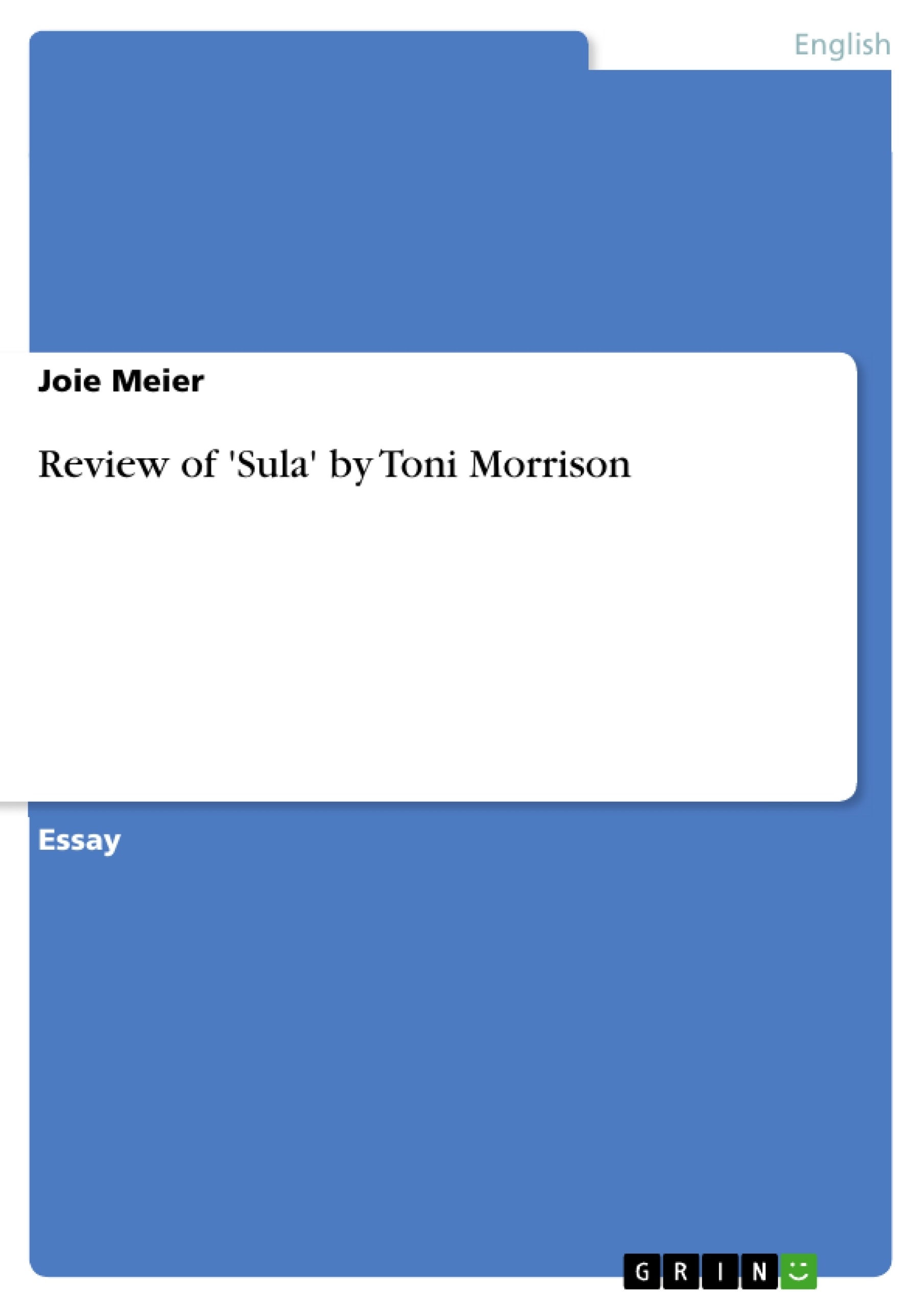Toni Morrison’s Sula is an extremely complex work of fiction that some argue functions as parable, satire, or Black-feminist writing. However, the complexity of the tale of Sula and Nel’s lives requires analysis including all of these elements. Morrison skillfully blends together gender roles with the binary opposition as she includes Biblical allusions to give clues to the characters’ personalities and future actions as they struggle against their community. It becomes clear to the reader through the characters’ actions and thoughts, that the world, which the Bottom created for itself, is inherently contradictory as the citizens of the community struggle to maintain binary thinking.
Sula and Shadrack represent the evil (or at least unacceptable) in the traditional good/evil binary that the Bottom’s community upholds. Both Sula and Shadrack face ostracization because of the negativity that is attached to them. Shadrack, however, chooses to live within the acceptable boundaries of the community with his celebration of Suicide Day. The community sees his celebration as bizarre, but in no way a threat to their existence as the years pass (Morrison 15).
Table of Contents
- Toni Morrison's Sula
- The Binary Opposition
- Shadrack
- Sula
- Nel
- Helene
- Black and White Binary
- Sula's Epiphany
- Mother/Childless Woman Binary
- Eva
Objectives and Key Themes
This essay analyzes Toni Morrison's novel Sula, exploring its complex portrayal of gender roles, binary oppositions, and the intricacies of community dynamics. It examines the characters' lives, their struggles against societal norms, and the inherent contradictions within the world they inhabit.
- Binary Oppositions and their Contradictions
- The Role of Gender and Societal Expectations
- Community Dynamics and Ostracization
- Biblical Allusions and Character Development
- The Interplay of Race and Identity
Chapter Summaries
- The essay begins by introducing the novel's central characters, Sula and Nel, and their complex relationship. The essay examines the binary opposition of good and evil within the community of the Bottom, highlighting how Sula and Shadrack represent the "evil" or unacceptable side of this binary.
- The essay explores the biblical allusions used by Morrison to provide insights into the characters' personalities and motivations. Shadrack, named after the biblical figure who refused to worship Nebuchadnezzar's golden statues, represents an individual who defies societal norms.
- Sula, marked by a birthmark that the community uses to ostracize her, is presented as a more sinister figure. The essay discusses the potential connection between Sula's birthmark and the mark of Cain, suggesting that her actions, such as her passivity during her mother's death, might represent a Cain-esque role.
- The essay explores the complex relationship between Sula and Nel, highlighting Sula's betrayal of Nel and the implications of her actions. The essay also discusses the possible symbolism of Nel as a Christ-like figure, betrayed by her husband, Jude, who is presented as a representation of Judas.
- The essay delves into the character of Nel and her internal conflict between her desire to be "good" and her capacity for harm. Nel's upbringing and the influence of her mother, Helene, are examined in relation to her actions and her acceptance of societal expectations.
- The essay explores the binary of black and white and how it is challenged by Sula's epiphany of white male privilege. The essay discusses the irony of the community's attempt to uphold segregation while simultaneously striving to conform to white standards of beauty and success.
- The essay concludes by examining the mother/childless woman binary and how it influences the community's perception of Sula. Eva, the matriarch of the community, represents a complex figure who is both a loving mother and a murderer of her own child. This complexity challenges the simplistic notion of motherhood within the community.
Keywords
This essay explores themes of gender roles, binary opposition, community dynamics, biblical allusions, ostracization, race and identity, and motherhood in Toni Morrison's Sula. It examines the characters' actions and motivations in light of their struggles against societal norms and the inherent contradictions within the world they inhabit.
- Citar trabajo
- Joie Meier (Autor), 2012, Review of 'Sula' by Toni Morrison, Múnich, GRIN Verlag, https://www.grin.com/document/230651



